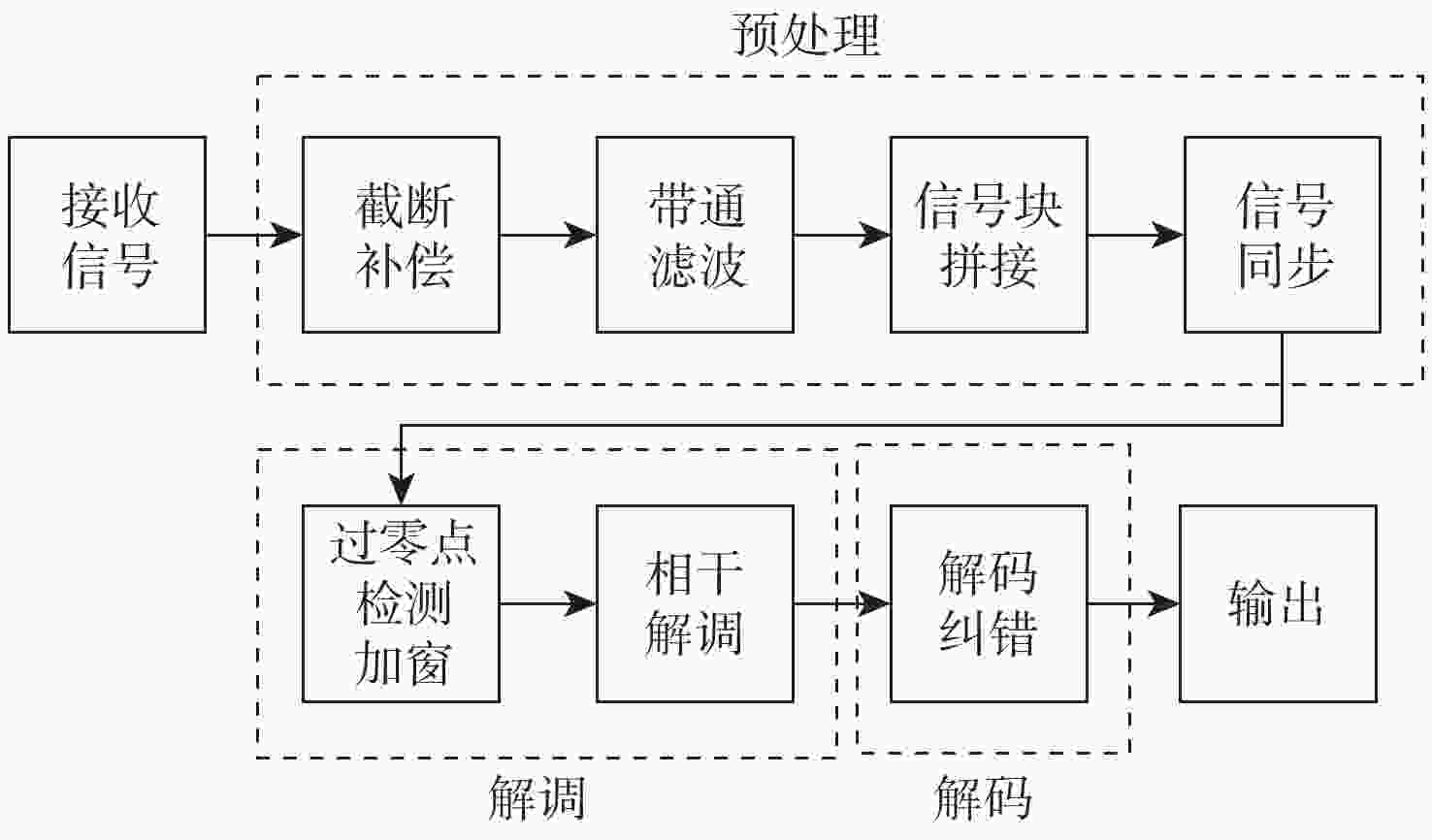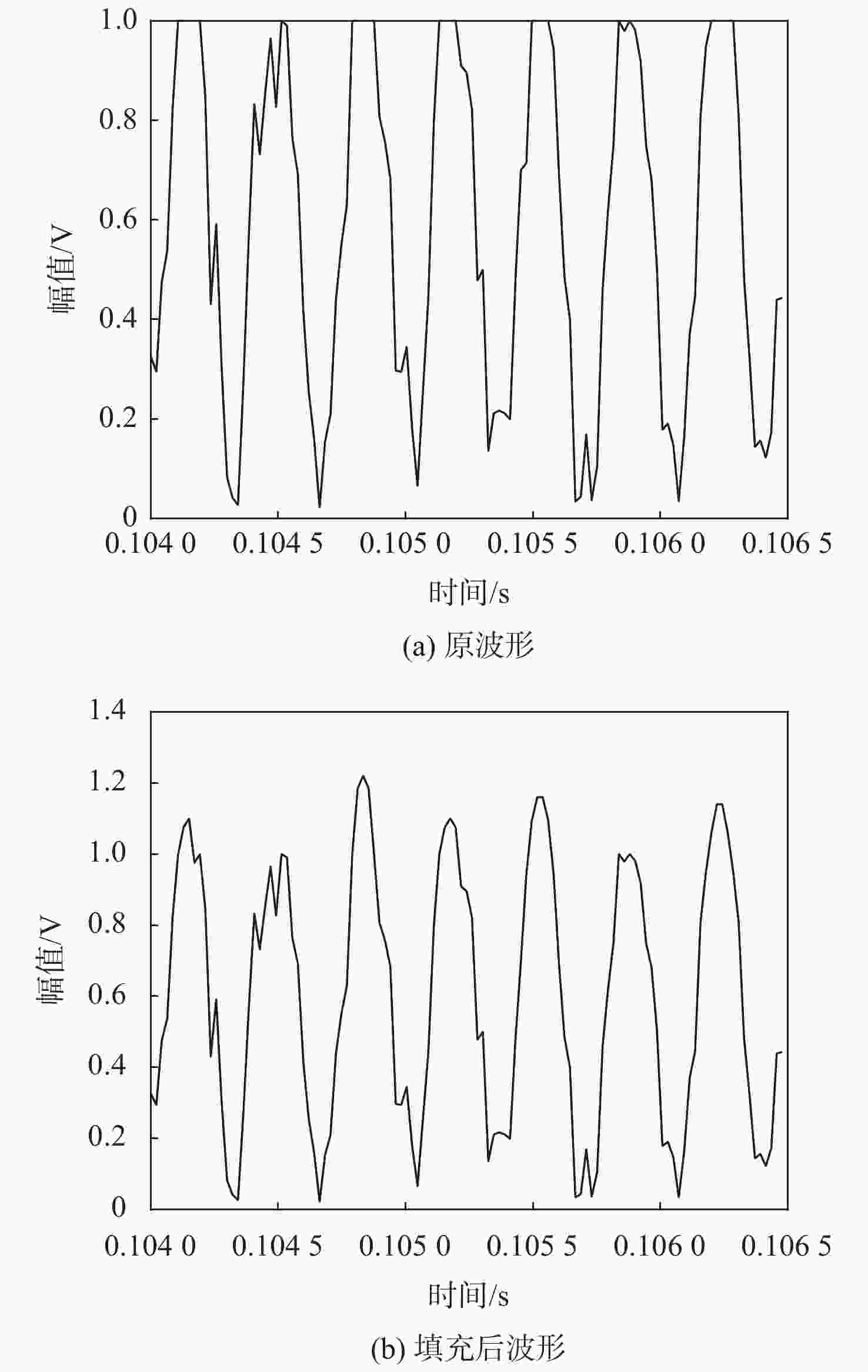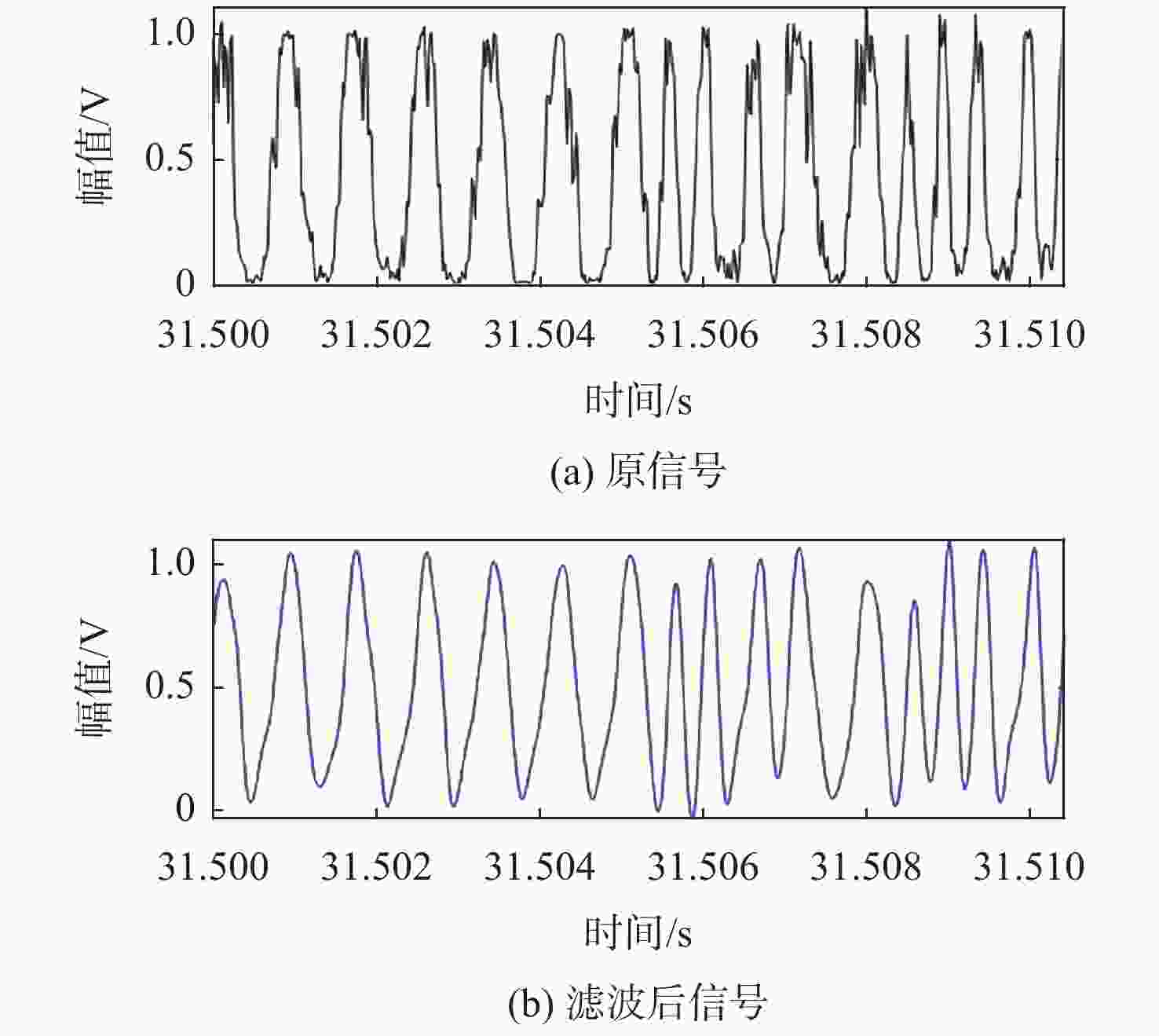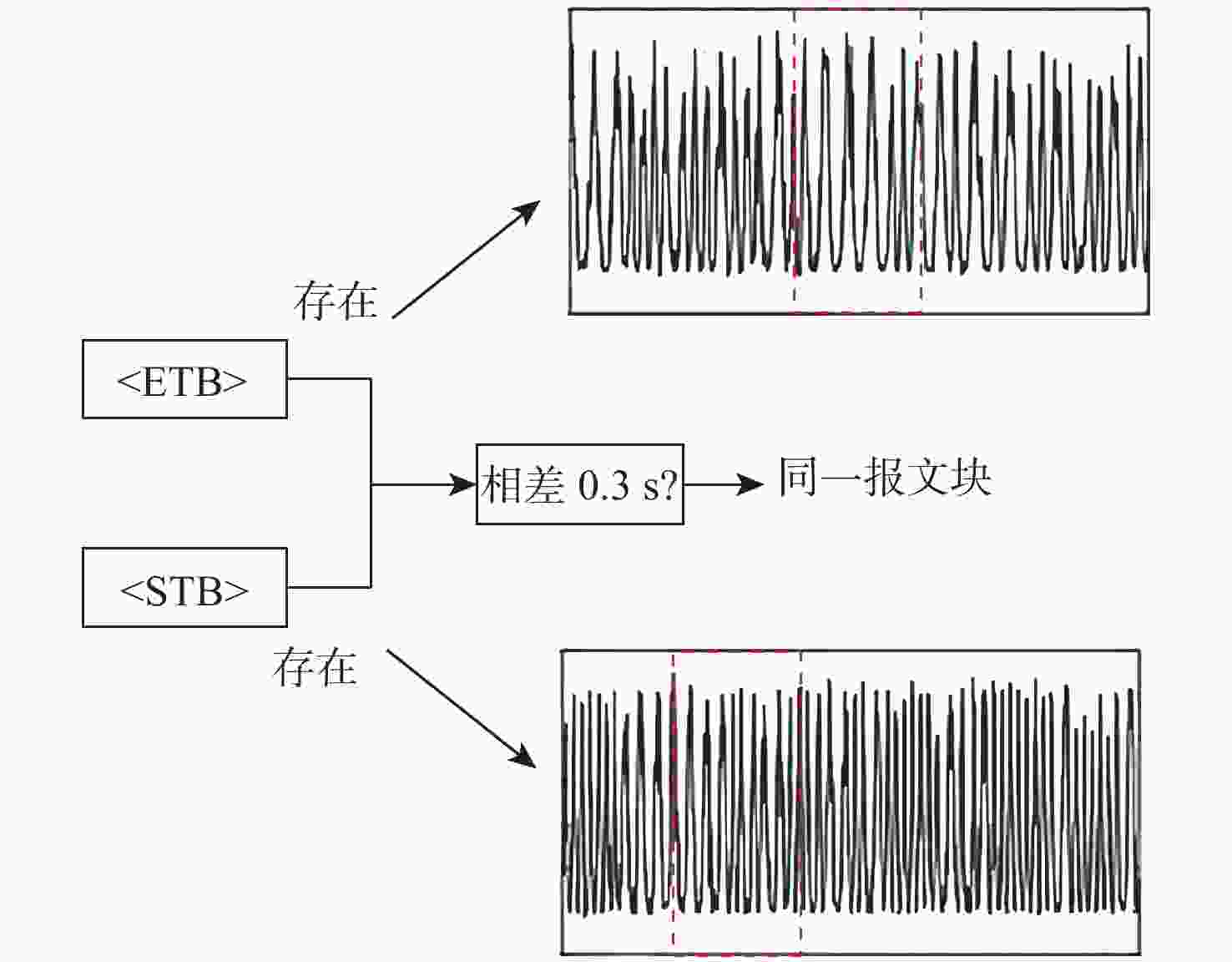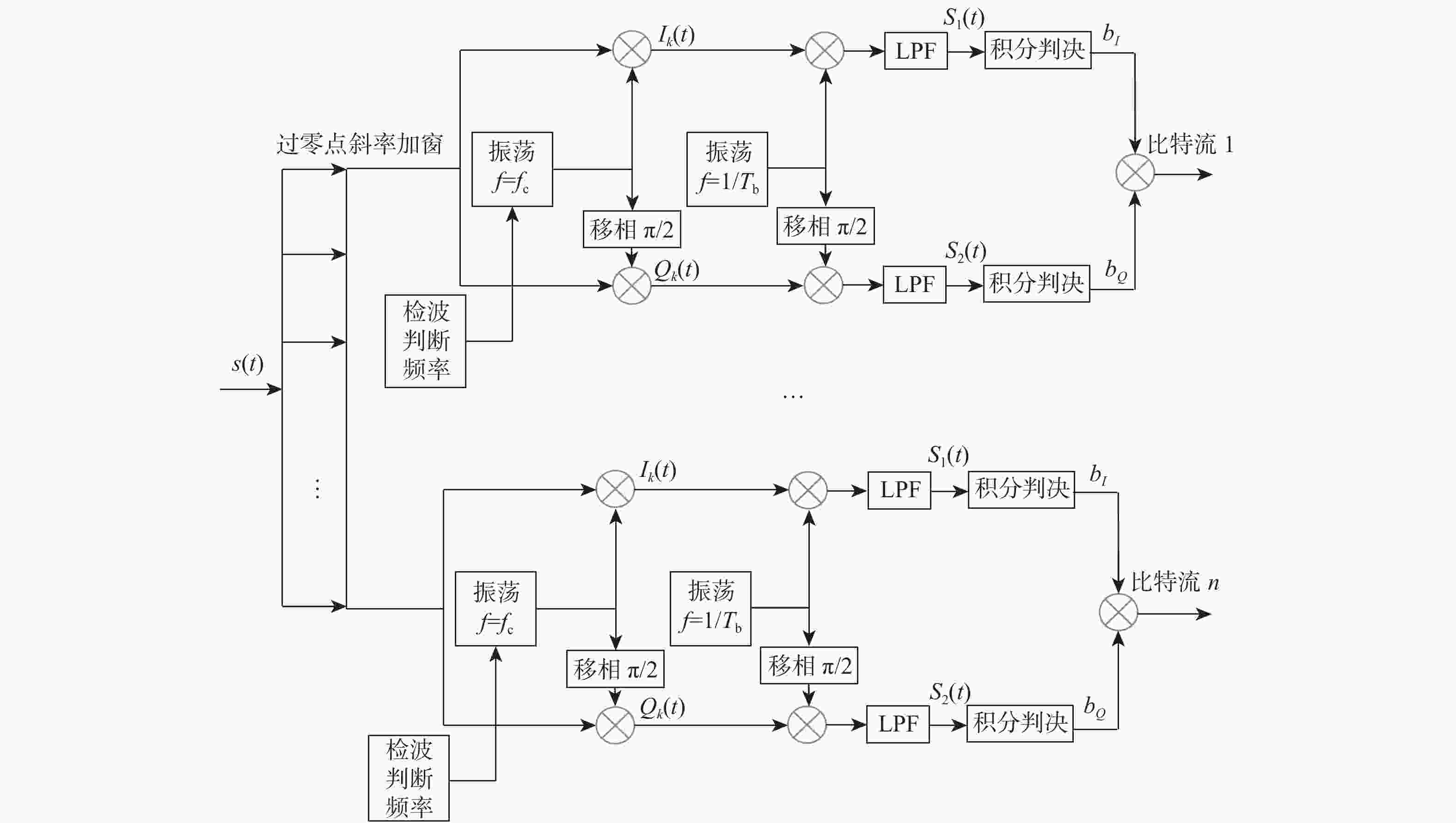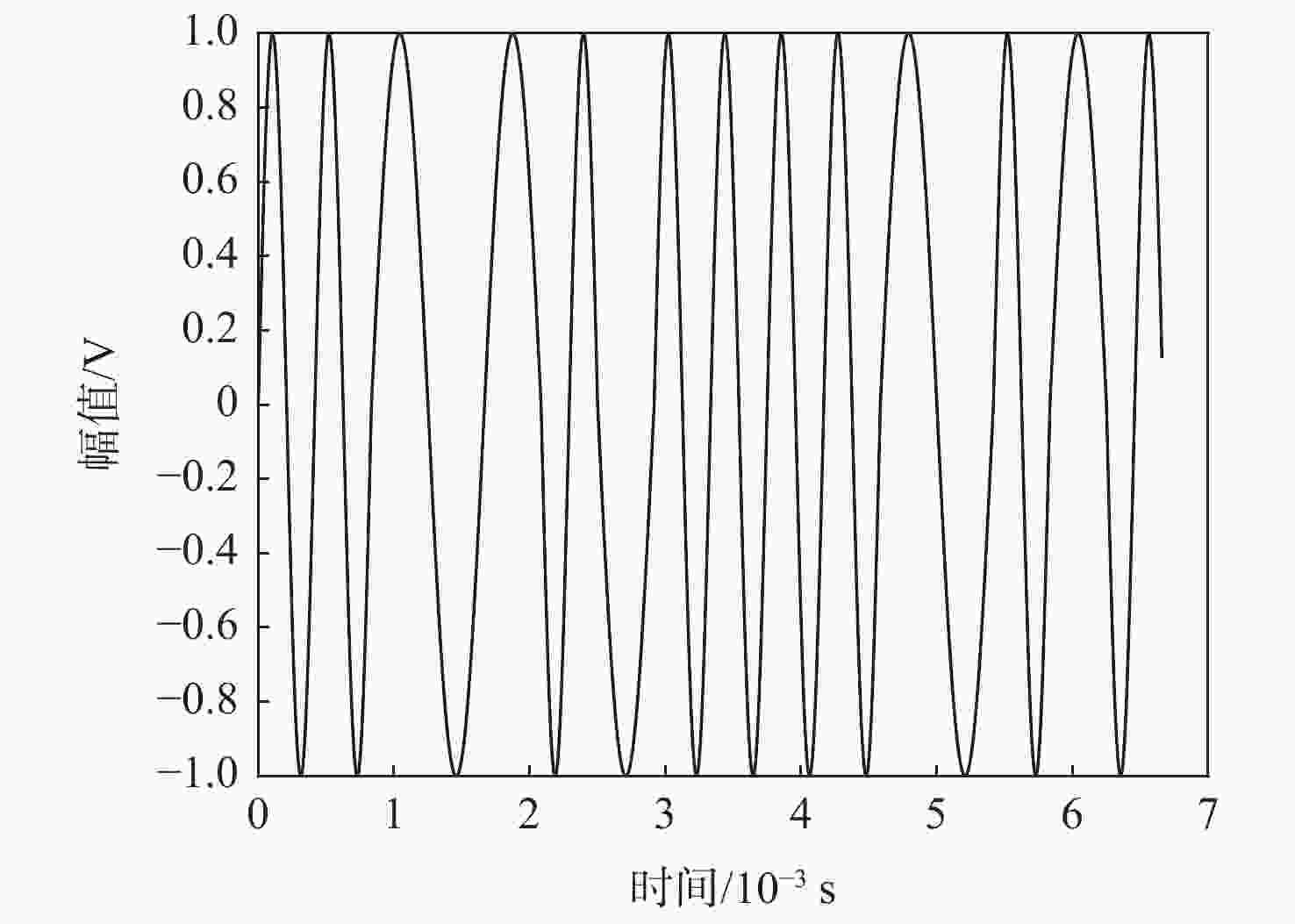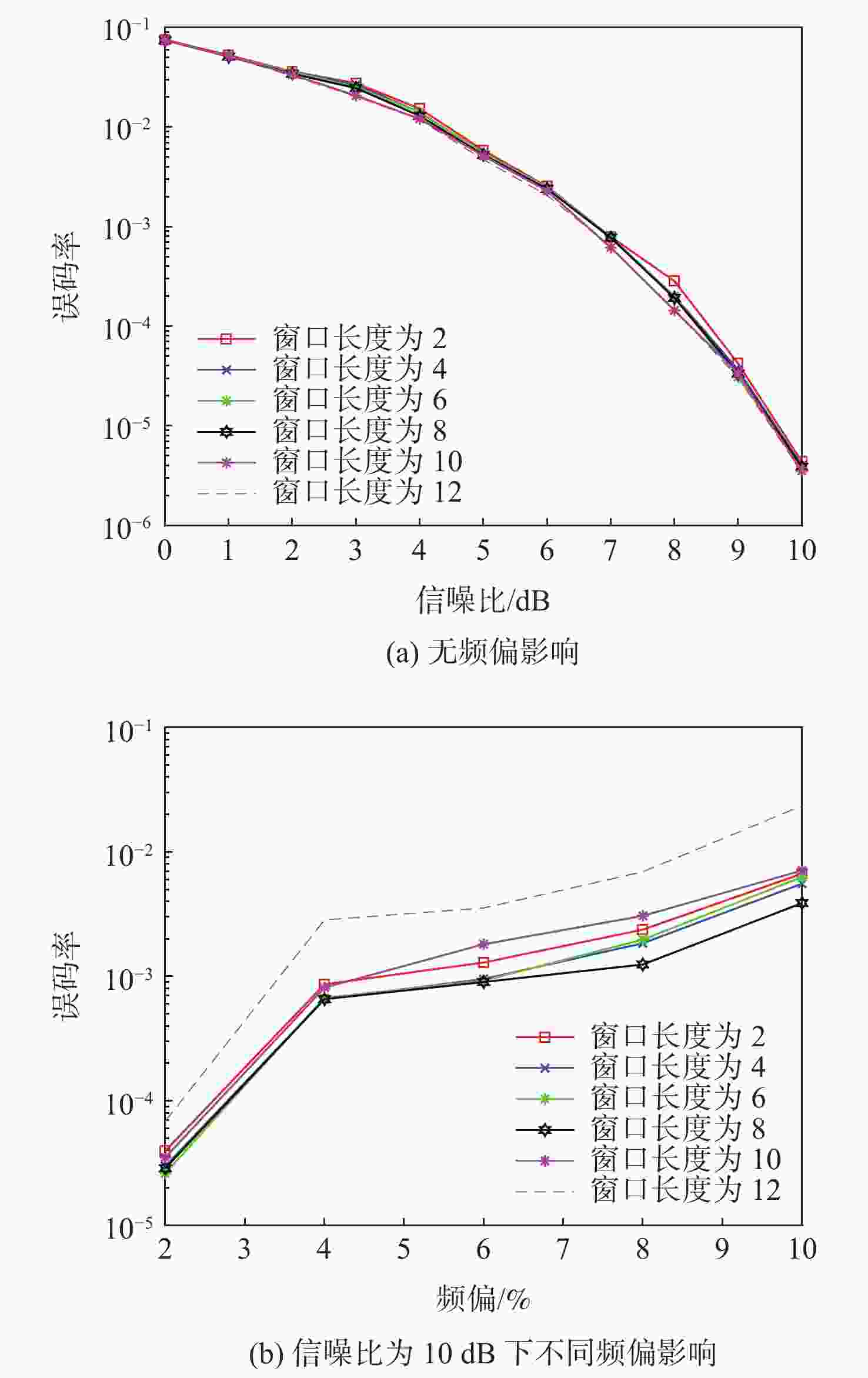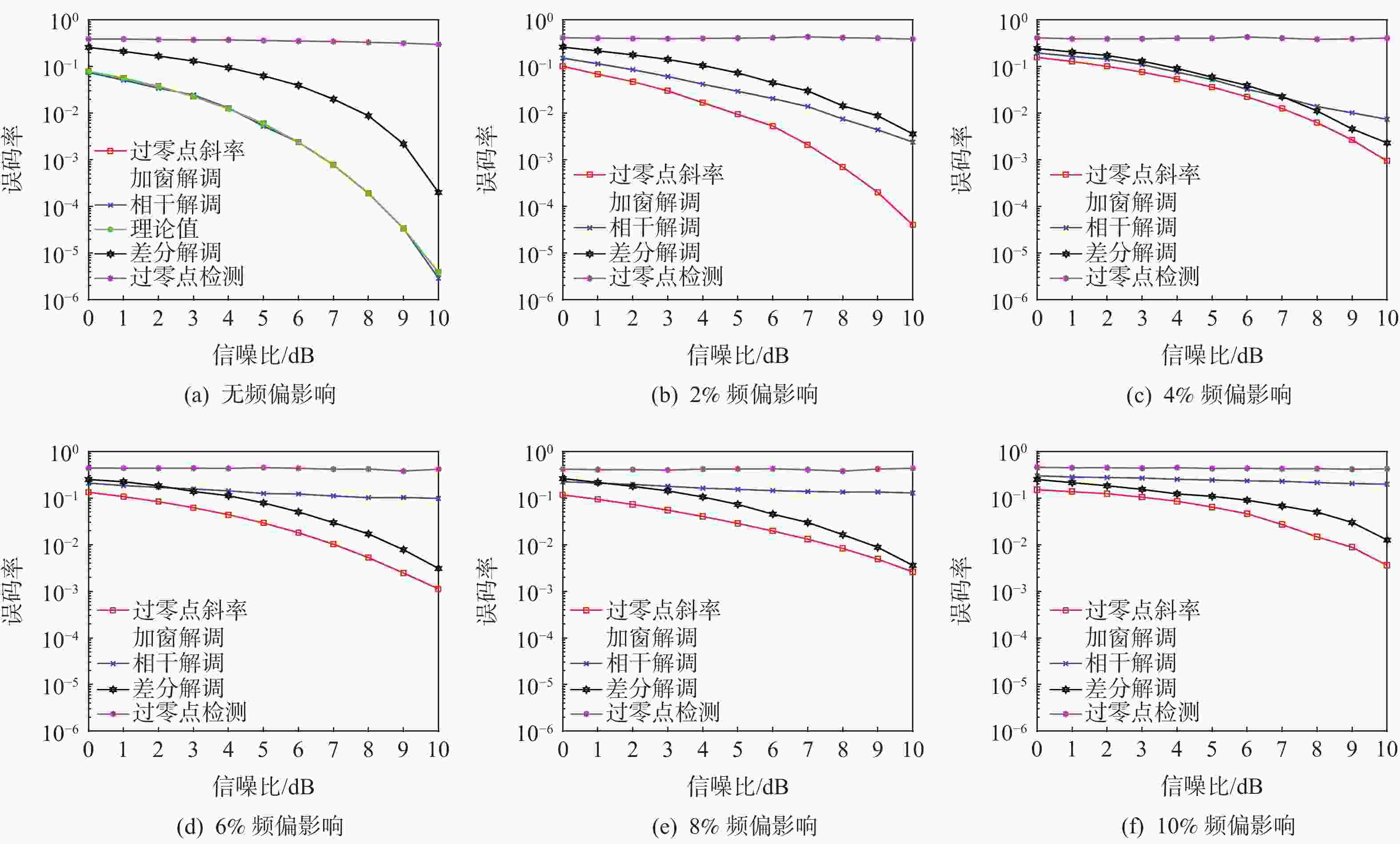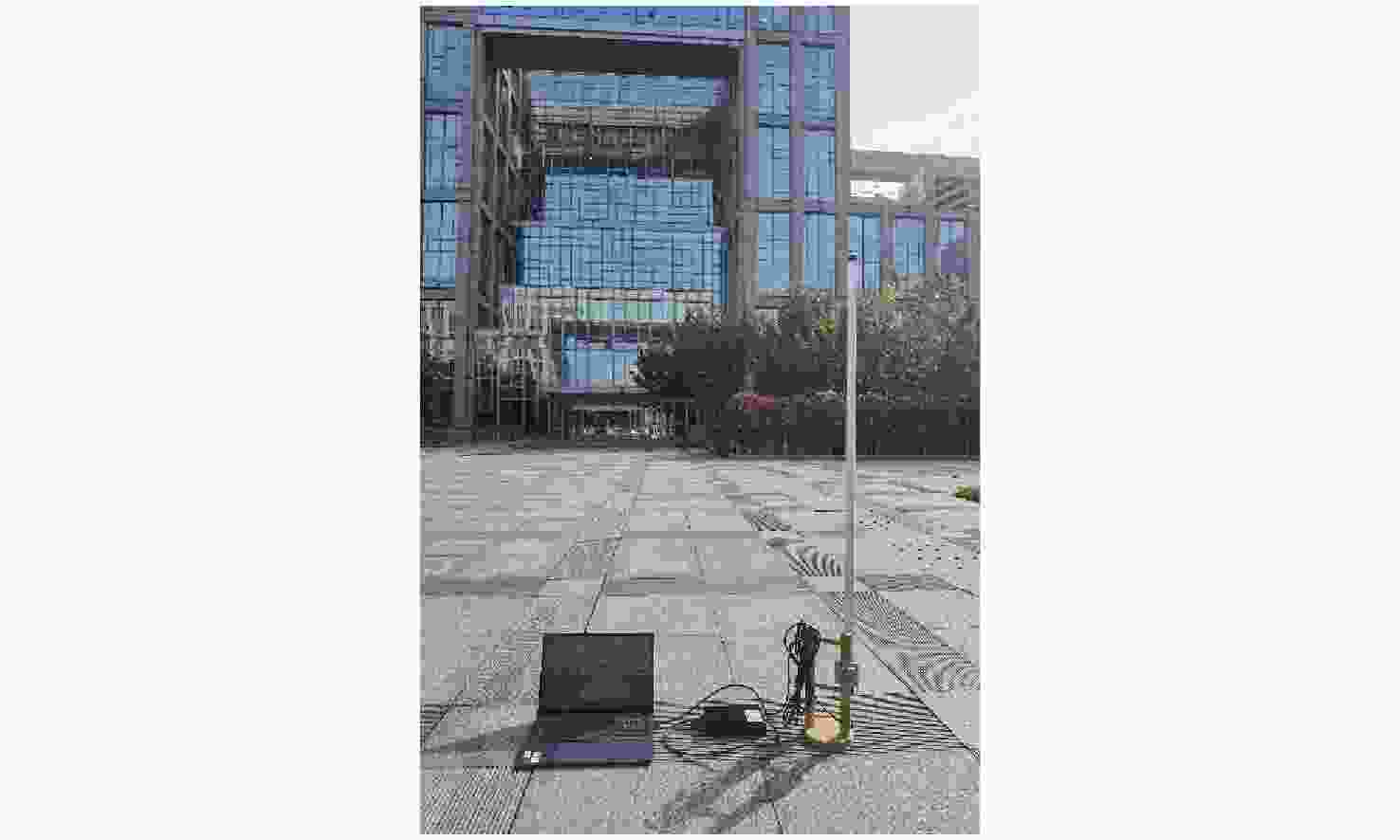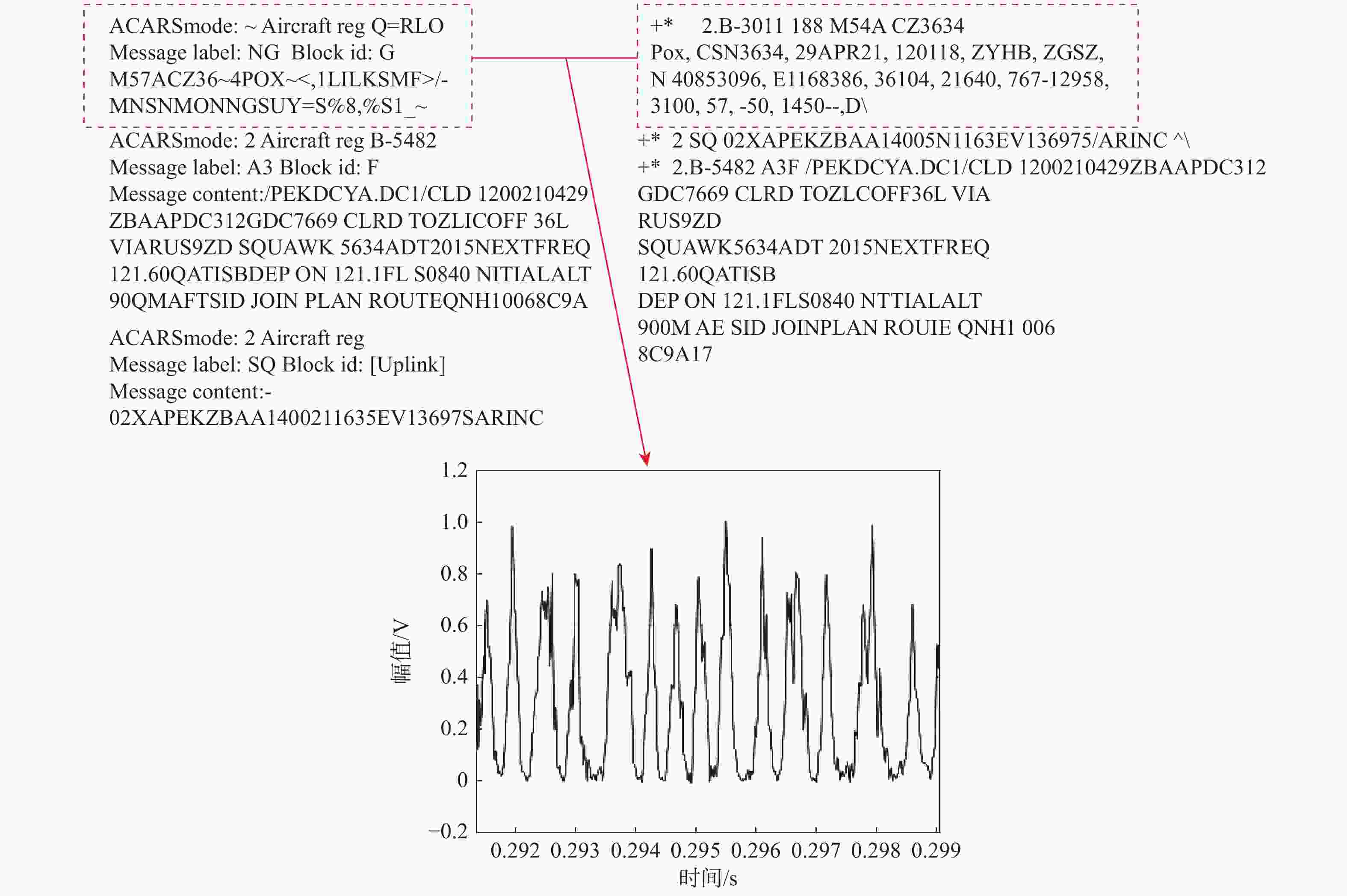-
摘要:
飞机通信寻址与报告系统(ACARS)允许飞机和地面站之间发送和接收报文,在保障飞行安全、实现空中交通管制等方面具有重要意义。通信链路的噪声和频偏是影响ACARS信号接收性能的关键因素。针对ACARS信号接收过程中的失真等问题,深入研究频偏、噪声等因素与ACARS报文接收性能之间的关系;在充分考虑噪声与多普勒频移等因素的基础上,提出基于过零点斜率加窗解调的ACARS信号接收方法,并从理论和仿真分析2方面探讨不同方法的抗频偏抗噪声能力;设计并搭建基于软件无线电平台的ACARS信号接收系统。通过对ACARS报文接收性能的仿真分析和真实报文接收性能的对比分析,表明所提方法在提升抗噪声和频偏能力、降低误码率等方面均具有优势。
-
关键词:
- 飞机通信寻址与报告系统 /
- 噪声 /
- 频偏 /
- 软件无线电 /
- 过零点斜率加窗解调
Abstract:The aircraft communication addressing and reporting system (ACARS) is a digital communication system that allows messages to be sent and received between aircraft and ground stations. It is important for ground-to-air data links, flight safety, and air traffic control. The noise and frequency offset of the communication link are the key factors that affect the performance of ACARS signal reception. Aiming at the distortion in the ACARS signal receiving process, this paper deeply studies the relationship between the frequency offset, environmental noise and other factors and the ACARS message receiving performance. An ACARS signal receiving method based on zero-crossing slope window demodulation is proposed, and the anti-frequency offset resistance of various methods is discussed from the two aspects of theory and simulation analysis. This is based on fully accounting for factors like noise and Doppler frequency shift.This article uses the USRP architecture to design and construct an ACARS reception system based on the software radio platform.Through the simulation analysis of the ACARS message reception performance and the comparison analysis of the real message reception performance, the proposed demodulation method has advantages in improving the anti-noise and frequency offset ability and reducing the bit error rate.
-
表 2 解调方法对比分析(无频偏,不同窗口长度,本文方法)
Table 2. Comparison of different demodulation methods (without frequency offset,different window lengths, the proposed method)
信噪比/dB 误码率 窗口长度为2 窗口长度为4 窗口长度为6 窗口长度为8 窗口长度为10 窗口长度为12 0 7.553×10−2 7.523×10−2 7.522×10−2 7.469×10−2 7.447×10−2 7.347×10−2 1 5.283×10−2 5.198×10−2 5.139×10−2 5.114×10−2 5.168×10−2 5.126×10−2 2 3.614×10−2 3.537×10−2 3.578×10−2 3.438×10−2 3.361×10−2 3.267×10−2 3 2.761×10−2 2.669×10−2 2.534×10−2 2.464×10−2 2.074×10−2 2.026×10−2 4 1.532×10−2 1.403×10−2 1.400×10−2 1.296×10−2 1.209×10−2 1.190×10−2 5 5.849×10−3 5.499×10−3 5.445×10−3 5.263×10−3 5.136×10−3 4.715×10−3 6 2.536×10−3 2.456×10−3 2.486×10−3 2.400×10−3 2.290×10−3 2.071×10−3 7 7.919×10−4 7.851×10−4 7.818×10−4 7.763×10−4 6.167×10−4 6.258×10−4 8 2.846×10−4 2.001×10−4 1.984×10−4 1.925×10−4 1.443×10−4 1.467×10−4 9 4.224×10−5 3.654×10−5 3.090×10−5 3.365×10−5 3.377×10−5 3.051×10−5 10 4.375×10−6 3.992×10−6 3.897×10−6 3.878×10−6 3.519×10−6 3.433×10−6 表 3 解调方法对比(有频偏,不同解调方法,信噪比为10 dB)
Table 3. Comparison of different demodulation methods (with frequency offset, different demodulation methods, SNR=10 dB)
频偏/% 误码率 相干解调 过零点检测 差分解调 过零点斜率加窗解调(窗口长度为8) 2 2.412×10−3 3.858×10−1 1.121×10−3 2.879×10−5 4 7.486×10−3 3.972×10−1 2.371×10−3 6.565×10−4 6 9.860×10−2 4.162×10−1 3.108×10−3 9.019×10−4 8 1.261×10−1 4.341×10−1 3.630×10−3 1.246×10−3 10 1.987×10−1 4.241×10−1 1.267×10−2 3.882×10−3 表 1 解调方法对比分析(无频偏,不同解调方法)
Table 1. Comparison of different demodulation methods(without frequency offset, different demodulation methods)
信噪比/dB 误码率 相干解调 过零点检测 差分解调 过零点斜率加窗解调(窗口长度为8) 0 7.865×10−2 3.909×10−1 2.568×10−1 7.469×10−2 1 5.628×10−2 3.890×10−1 2.113×10−1 5.114×10−2 2 3.751×10−2 3.788×10−1 1.682×10−1 3.438×10−2 3 2.288×10−2 3.738×10−1 1.313×10−1 2.464×10−2 4 1.250×10−2 3.737×10−1 9.439×10−2 1.296×10−2 5 5.954×10−3 3.613×10−1 6.321×10−2 5.263×10−3 6 2.388×10−3 3.522×10−1 3.941×10−2 2.400×10−3 7 7.727×10−4 3.450×10−1 2.056×10−2 7.763×10−4 8 1.909×10−4 3.309×10−1 8.881×10−3 1.925×10−4 9 3.362×10−5 3.177×10−1 2.291×10−3 3.365×10−5 10 3.875×10−6 2.983×10−1 3.076×10−4 3.878×10−6 表 4 解调方法对比(有频偏,不同窗口长度,信噪比为10 dB,本文方法)
Table 4. Comparison of different demodulation methods (with frequency offset, different window lengths, SNR=10 dB, the proposed method)
频偏/% 误码率 窗口长度为2 窗口长度为4 窗口长度为6 窗口长度为8 窗口长度为10 窗口长度为12 2 3.968×10−5 2.987×10−5 2.622×10−5 2.879×10−5 3.514×10−5 6.873×10−5 4 8.639×10−4 6.577×10−4 6.726×10−4 6.565×10−4 8.126×10−4 2.840×10−3 6 1.293×10−3 9.524×10−4 9.261×10−4 9.019×10−4 1.812×10−3 3.547×10−3 8 2.374×10−3 1.846×10−3 1.973×10−3 1.246×10−3 2.565×10−3 6.918×10−3 10 6.684×10−3 5.556×10−3 6.277×10−3 3.882×10−3 7.091×10−3 2.349×10−2 表 5 USRP数据和仿真数据对比 (仿真数据,信噪比为0)
Table 5. Comparison of USRP data and simulation data (simulation data, SNR=0)
数据 误码率 相干解调 过零点检测 差分解调 过零点斜率加窗解调 报文数据1 7.765×10−2 3.910×10−1 2.495×10−1 7.469×10−2 报文数据2 7.869×10−2 3.309×10−1 2.367×10−1 7.625×10−2 随机数据1 7.523×10−2 3.482×10−1 2.918×10−1 7.664×10−2 随机数据2 7.619×10−2 3.774×10−1 2.128×10−1 7.615×10−2 表 6 USRP数据和仿真数据对比 (USRP接收数据,信噪比为0)
Table 6. Comparison of USRP data and simulation data (data received by USRP, SNR=0)
数据 误码率 相干解调 过零点检测 差分解调 过零点斜率加窗解调 报文数据1 9.971×10−2 4.371×10−1 3.269×10−1 8.519×10−2 报文数据2 1.001×10−1 3.917×10−1 2.901×10−1 8.610×10−2 随机数据1 9.864×10−2 3.934×10−1 3.117×10−1 8.636×10−2 随机数据2 9.876×10−2 4.143×10−1 2.965×10−1 8.770×10−2 表 7 实测接收报文结果与PlanePlotter软件处理结果对比
Table 7. Comparison of measured received message results and PlanPlotter software processing results
% 数据 成功率 PlanePlotter软件 相干解调 过零点检测 差分解调 过零点斜率加窗解调 操场数据1 89.655 56.896 56.896 56.896 93.103 操场数据2 88.524 63.946 63.946 63.946 93.442 天台数据1 87.097 66.129 66.129 66.129 90.323 天台数据2 86.667 63.333 63.333 63.333 90.000 -
[1] OISHI R T, HEINKE A. Communications[M]//SPITZER C, FERRELL U, FERRELL T. Digital avionics handbook. Boca Raton: CRC Press, 2015: 7-20. [2] STEELEJR N D. ARINC communications addressing and reporting system(ACARS)—The data link that got implemented and why: AIAA 77-1522[R]. Reston: AIAA, 1977. [3] MONINGER W R, MILLERl P A. ACARS quality control, monitoring, and correction[C]//Proceedings of the 10th Conference on Numerical Weather Prediction. Boston: AMS Publications, 1994: 18-22. [4] 王敏杰, 文荣辉, 陈昱均. 基于ACARS数据链的MSK解调方法抗干扰性能研究[J]. 现代信息科技, 2020, 4(6): 69-72.WANG M J, WEN R H, CHEN Y J. Research on anti-interference performance of MSK demoulation method based on ACARS data link[J]. Modern Information Technology, 2020, 4(6): 69-72(in Chinese). [5] ROY A . Secure aircraft communications addressing and reporting system (ACARS)[C]//Proceedings of the 20th Digital Avionics Systems Conference. Piscataway: IEEE Press, 2001: 7196873. [6] 郭静. 中国民航地空数据链的建设、发展与应用[J]. 中国民用航空, 2006, 1(3): 64-66.GUO J. Construction, development and application of China civil aviation air/ground data chain[J]. China Civil Aviation, 2006, 1(3): 64-66(in Chinese). [7] MCGUIRE R L. VHF data link: A demonstration using the ACARS protocol[C]//Proceedings of the 18th Digital Avionics Systems Conference. Piscataway: IEEE Press, 1999: 6572559. [8] KITAORI J. A performance comparison between VDL mode 2 and VHF ACARS by protocol simulator[C]//Proceedings of the 28th Digital Avionics Systems Conference. Piscataway: IEEE Press, 2009: 11001450. [9] SCHWARTZ B, BENJAMIN S G. A comparison of temperature and wind measurements from ACARS-equipped aircraft and rawinsondes[J]. Weather and Forecasting, 1995, 10(3): 528-544. doi: 10.1175/1520-0434(1995)010<0528:ACOTAW>2.0.CO;2 [10] SMITH M, MOSER D, STROHMEIER M, et al. Economy class crypto: Exploring weak cipher usage in avionic communications via ACARS[C]//Proceedings of the International Conference on Financial Cryptography and Data Security. Berlin: Springer, 2017: 285-301. [11] SUN S. ACARS data identification and application in aircraft maintenance[C]//Proceedings of the First International Workshop on Database Technology and Applications. Piscataway: IEEE Press, 2009: 255-258. [12] HAN P, HUI H, LU X, et al. A research and implementation on real time tracking for abnormal flight using ACARS[C]//Proceedings of the 37th Digital Avionics Systems Conference. Piscataway: IEEE Press, 2018: 1-6. [13] 赵军, 唐弋棣. 基于 ACARS 数据的民航发动机状态监控研究[J]. 计算机仿真, 2020, 37(8): 49-52.ZHAO J, TANG Y D. On civil aviation engine condition monitoring based on ACARS data[J]. Computer Simulation, 2020, 37(8): 49-52(in Chinese). [14] LIN L, LIU J, GUO H, et al. Sample adaptive aero-engine gas-path performance prognostic model modeling method[J]. Knowledge-Based Systems, 2021, 224(19): 107072-107083. [15] XU H, XIAO K, CHENG J, et al. Characterizing aircraft engine fuel and emission parameters of taxi phase for Shanghai Hongqiao International Airport with aircraft operational data[J]. Science of the Total Environment, 2021, 720(10): 137431-137439. [16] LU J, YU X P, YANG J F, et al. Engineering implementation of MSK modulation and demodulation technology[C]//Proceedings of the 2nd International Conference on Artificial Intelligence and Information Systems. NewYork: ACM, 2021: 1-7. [17] GELOZHE Y A, MAKSIMOV A V. Influence of radio interference on the MSK signals demodulator[C]//Proceedings of the Radiation and Scattering of Electromagnetic Waves. Piscataway: IEEE Press, 2021: 476-479. [18] 齐思航, 徐争光. 脉冲噪声下MSK 信号解调算法研究[J]. 舰船电子工程, 2021, 41(7): 89-92.QI S H, XU Z G. Research on MSK signal demodulation algorithm under impulsive noise[J]. Ship Electronic Engineering, 2021, 41(7): 89-92(in Chinese). [19] LIU Y, HU G, HUANG L, et al. A joint phase and timing estimation algorithm for MSK signals based on Walsh sequence[C]//Proceedings of the International Conference on Communications, Information System and Computer Engineering. Piscataway: IEEE Press, 2021: 61-65. [20] LU K, CONG Y, FANG J, et al. A joint code-Doppler acquisition algorithm for DSSS-MSK based on FFT[C]//Proceedings of the IEEE 4th Information Technology, Networking, Electronic and Automation Control Conference. Piscataway: IEEE Press, 2020, 1: 1118-1123. [21] LUTOVAC M D, TOSICD V, EVANS B L. 信号处理滤波器设计[M]. 朱义胜, 董辉, 译. 北京: 电子工业出版社, 2004: 230-231.LUTOVAC M D, TOSICD V, EVANS B L. Filter design for signal processing[M]. ZHU Y S, DONG H, translated. Beijing: Publishing House of Electronics Industry, 2004: 230-231(in Chinese). -







 下载:
下载:


